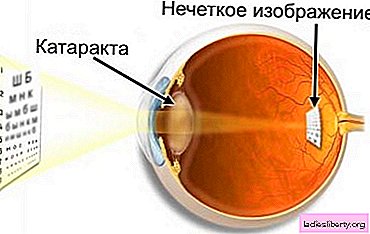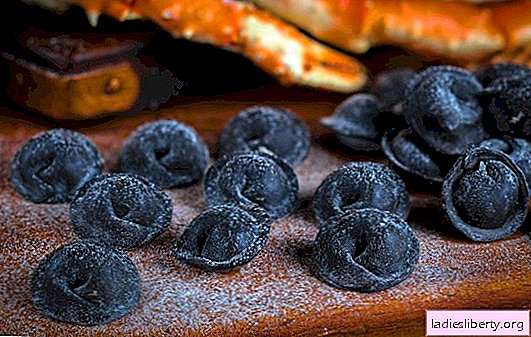
Nasal contusion refers to fairly frequent injuries, which are characterized by severe soreness.
Given that such damage affects the front of the skull, leaving it unattended is simply dangerous.
And, despite the fact that with a bruised nose, the integrity of the bone and cartilage structures is not violated, such an injury can provoke serious consequences.
Nasal bruise: causes and symptoms
The main reason for getting a bruised nose is a direct blow received as a result of a fall, collision with solid objects.
No one is safe from such accidents, which can occur both at home and on vacation or at work. However, there are patients who can safely be attributed to the risk group.
More often with bruised nose:
1. Kids due to increased age-related activity.
2. Teenagers during dangerous sports or too active recreation, fights.
3. Professional athletes and amateurs who engage in traumatic sports.
4. Elderly people who receive similar injuries due to loss of balance due to age-related diseases.
In addition, the risks of getting a bruised nose increase during icing.
With a bruised nose, it is soft tissues that are damaged.
Symptoms of injury are slightly different from signs of fracture.
However there are characteristic symptoms, observed precisely with a bruise, which can include:
1. A sharp and intense soreness, which is usually able to intensify during pressure, and sometimes light touch. Bruising pain can be significantly more intense than during a fracture.
2. Rapidly developing puffiness.
3. The appearance of subcutaneous hemorrhage, manifested by redness, bruising and hematomas, which are localized not only in the nose, but also around the eyes.
4. Short-term loss of consciousness, as well as frequent dizziness after receiving a bruise.
5. Increased lacrimation.
6. Nasal bleeding, the intensity of which depends on the condition and location of the vessels, as well as blood coagulation.
7. Respiratory problems due to swelling of the nasal cavities and the presence of blood clots in the nose.
In some patients, a nasal contusion may also be accompanied by:
• nausea or vomiting;
• hemorrhage in the eyeballs;
• vision problems;
• severe headache;
• inhibition.
Such signs may indicate a concussion, which quite often can accompany a bruised nose.
In addition, a bruised nose can provoke a number of consequences in the form of:
• nose deformation with a change in shape or a shift to the side;
• curvature of the septum in the nose;
• breathing problems in the form of night snoring, sniffling, or whistling that accompanies breathing;
• suppurations, abscesses, infectious processes, accompanied by fever, as well as significant headaches;
• sepsis or purulent meningitis;
• sinusitis, rhinitis or sinusitis;
• the appearance of allergic abnormalities;
• craniocerebral herbs.
Nasal Bruise: First Aid
Immediately after receiving a bruised nose, it is important to provide the right help. This will prevent significant hematomas, bruising, and other more serious complications.
First of all, the victim must be seated and reassured, not allowed to make sharp and active movements. With a similar injury in a baby, it must be distracted and any way to prevent crying, because during a strong cry, the likelihood of swelling increases.
If the bruise is accompanied by nosebleeds, it is necessary to tilt the victim’s head slightly forward. In the nasal passages you need to insert turundas, which can be made of cotton wool or bandage. Before administration, they are moistened with hydrogen peroxide. Such swabs should be in the nose for up to 10 minutes. It may take half an hour to stop intense bleeding.
In the absence of bleeding, the head must be thrown back. Such manipulation can reduce soreness and swelling.
At the same time, an ice compress is applied to the nose bridge, as well as to the nape of the neck, which is kept for no more than 15 minutes. Such compresses must be done the first couple of days after receiving an injury three times a day. For these purposes, you can use ice wrapped in a dense cloth or a heating pad filled with chilled liquid.
If, when a bruise is received, the skin is damaged, abrasions or wounds are treated with hydrogen peroxide, and then a bandage from the bandage is applied.
If you have severe pain, you can use painkillers. In such cases, it is better to use analgesics. Medications of the non-steroidal group are able to enhance nosebleeds, so it is not recommended to take them with a bruised nose.
Nasal Bruise: Treatment
After first aid, the victim must be shown to the doctor. A bruise is quite difficult to visually distinguish from a fracture. Therefore, additional diagnostic measures will be required to determine the type of injury. In addition, a bruise can be accompanied by a concussion. And such a pathology requires serious treatment and quite often in a hospital setting.
Therefore, you may need an x-ray or tomographic examination.
Treatment of bruises that are not accompanied by serious complications is:
1. Periodically applying ice packs to the place of damage, which are done for the first two days.
2. The use of ointments that promote resorption of hematomas.
Doctors recommend using a troxevasin ointment for a bruised nose. This tool is able to strengthen blood vessels, reduce swelling and dissolve bruising, hematomas. Apply a similar ointment to the site of the bruise up to three times during the day under a bandage. For these purposes, you can use Traumeel ointment or another external agent containing heparin.
If the patient has skin lesions, regular antiseptic treatment will be required, followed by applying sterile dressings to the lesion site.
To facilitate breathing, the patient is prescribed drops with a vasoconstrictor effect.
After a couple of days, it is allowed to begin physiotherapy in the form of electrophoresis, laser or magnetic therapy. Such procedures help fight puffiness, help reduce soreness and increase blood flow. From the third day, you can start the warming procedure.
During treatment of a bruised nose, the patient needs complete rest. Therefore, do not let the kids actively move, jump and run. It is necessary to carefully monitor the behavior of the child so as not to miss the signs of concussion.
In the presence of dizziness and severe pain, the victim is recommended to observe strict bed rest until the negative symptoms disappear.
Nose injury: folk remedies
You can deal with the effects of a bruised nose with the help of folk recipes. The main thing is to consider that with any bruises the first days require cold. You can resort to warming up procedures only on the third day.
1. You can reduce soreness with a bruised nose with the help of buttercup flowers, from which alcohol tincture or decoction is prepared. Similar tools are used to grind the bruised place, which must be done with gentle movements twice a day.
2. Cabbage has unique anti-inflammatory and decongestant properties. With a bruised nose, cabbage leaves can be applied, which must first be slightly wrinkled. A similar compress is fixed with a bandage, and after an hour is replaced with a new fresh sheet.
3. You can use and warming the injury with a compress made from boiled and crushed beans. Such warming is done for 15 minutes, after which the beans are washed off with plain water.
4. Raw potatoes copes with inflammatory reactions and swelling. Therefore, with a bruised nose, compresses can be made from raw potatoes all night, for which they rub it on a grater or cut into thin plates.
5. Coping with pain, relieving inflammation and soothing will help regular honey. Therefore, when receiving a bruised nose, you can use a compress made from equal parts of fresh honey and chopped aloe leaves. A similar compress can be applied to the damaged area up to three times during the day. In this way, wounds can also be treated, which will accelerate their healing.
6. Camphor alcohol can be used to warm the bruised area. Rubbing with this tool helps to quickly get rid of inflammatory processes.
7. To eliminate bruises, hot lotions will be required, for which Epsom salt is used. You can also warm the bruise with heated sand, salt, boiled chicken egg. Warming up procedures can be carried out up to three times a day. However, it is necessary to exclude walks in the cold air after warming up.
8. To facilitate breathing, you can use the washing of the nasal cavities. For this purpose, use a camomile weak broth.
Such methods are effective only in the presence of mild forms of injury. In more serious situations, the use of medications is required.
Do not ignore such a seemingly slight injury. Nasal contusion without proper treatment can cause a significant number of health problems in the future.











